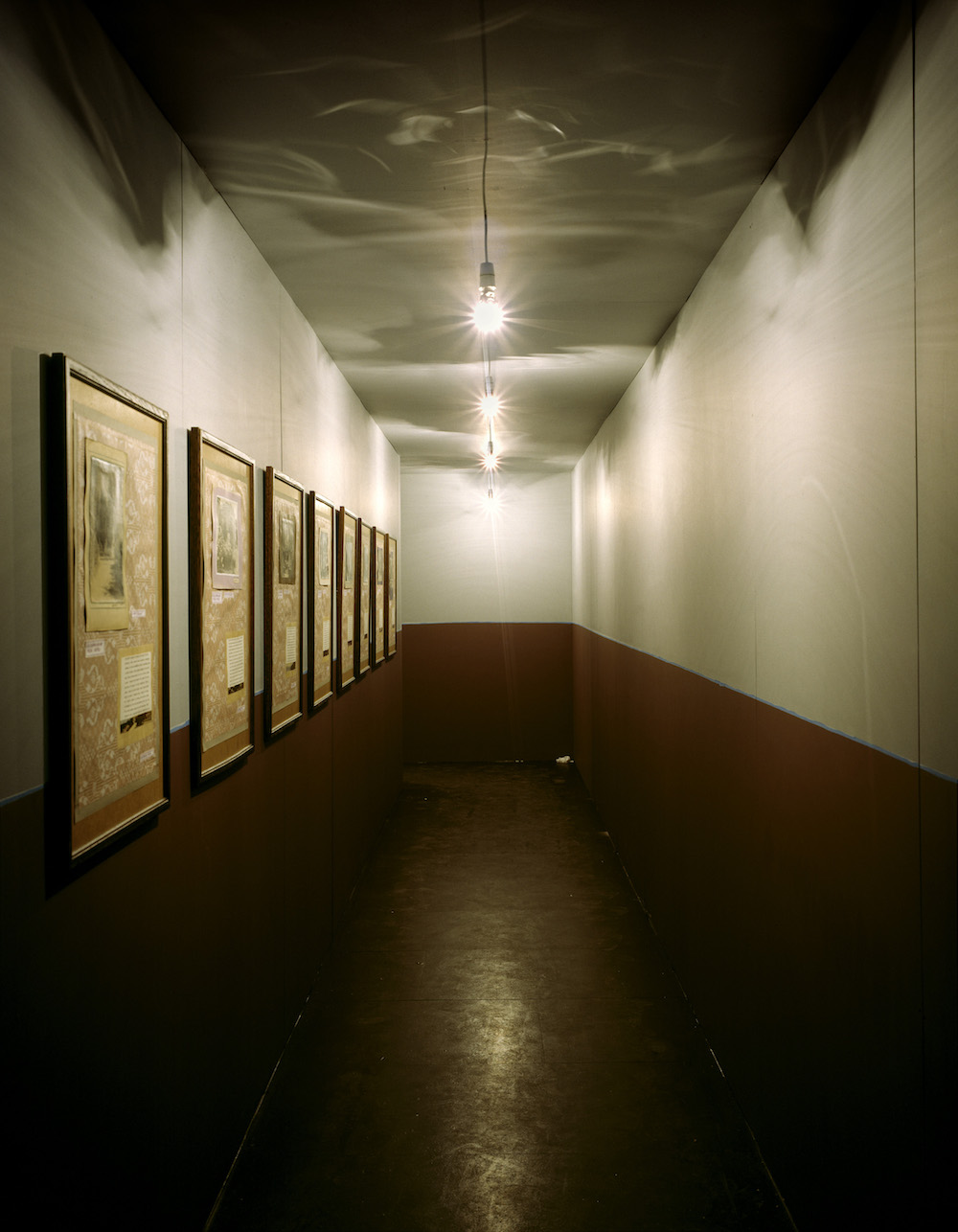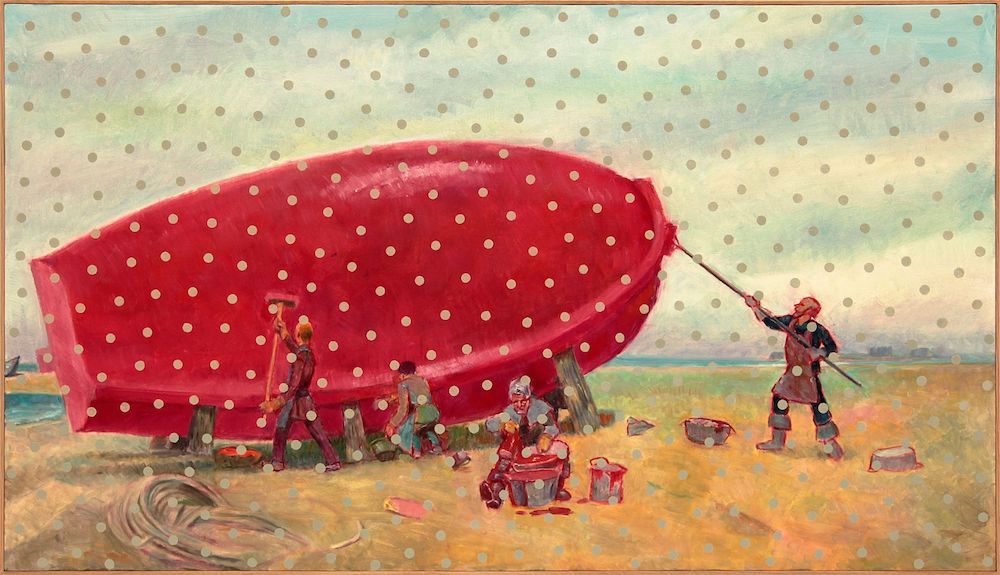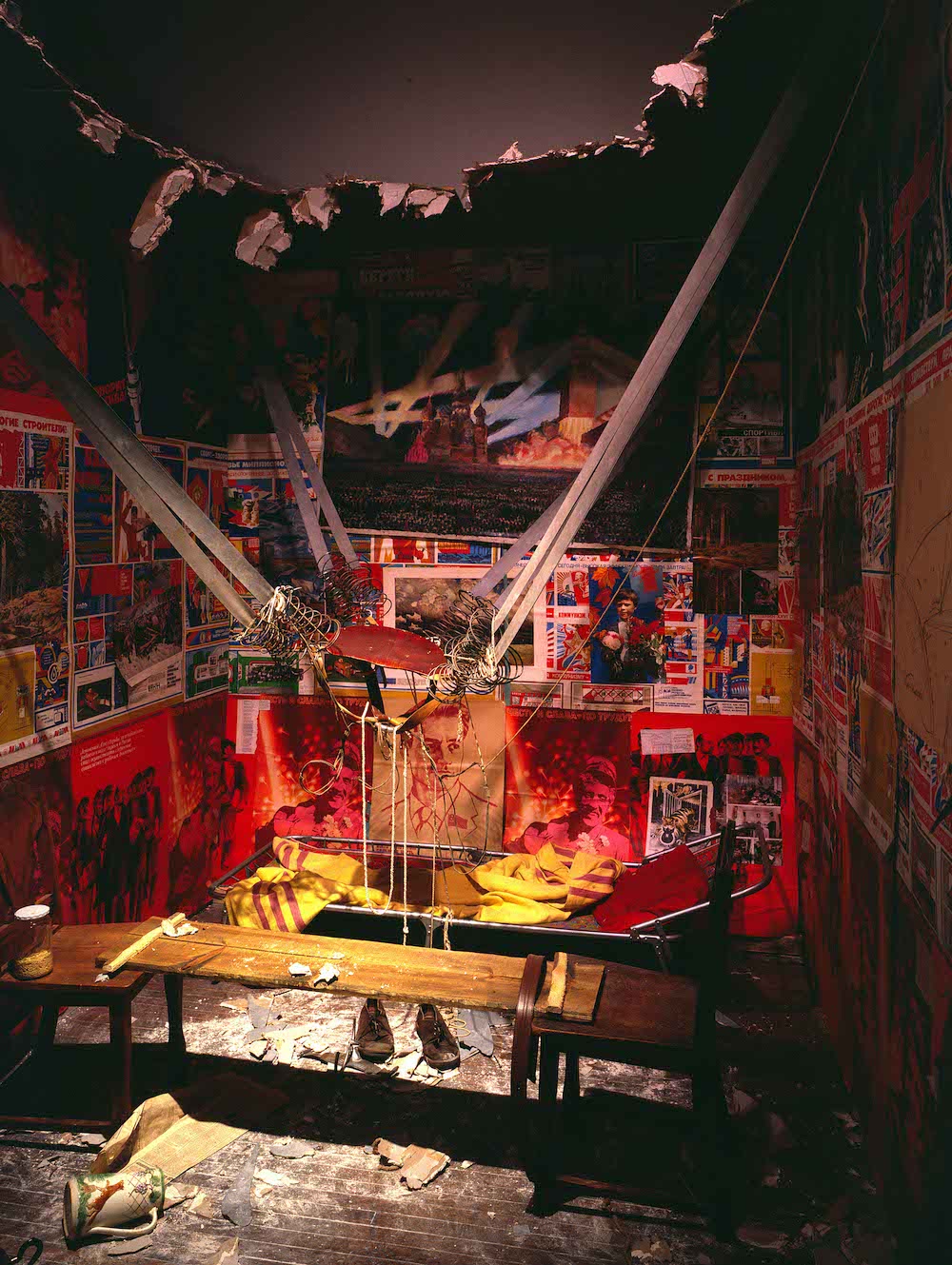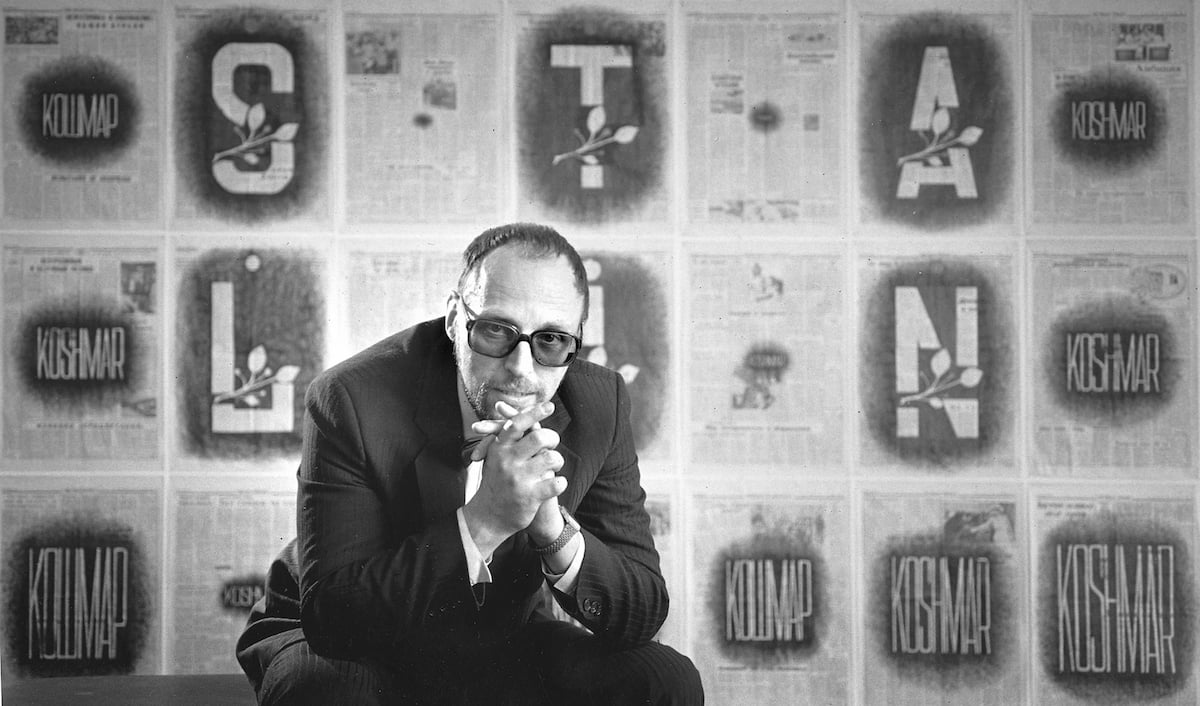The case of the missing artist: an interview with Emilia Kabakov
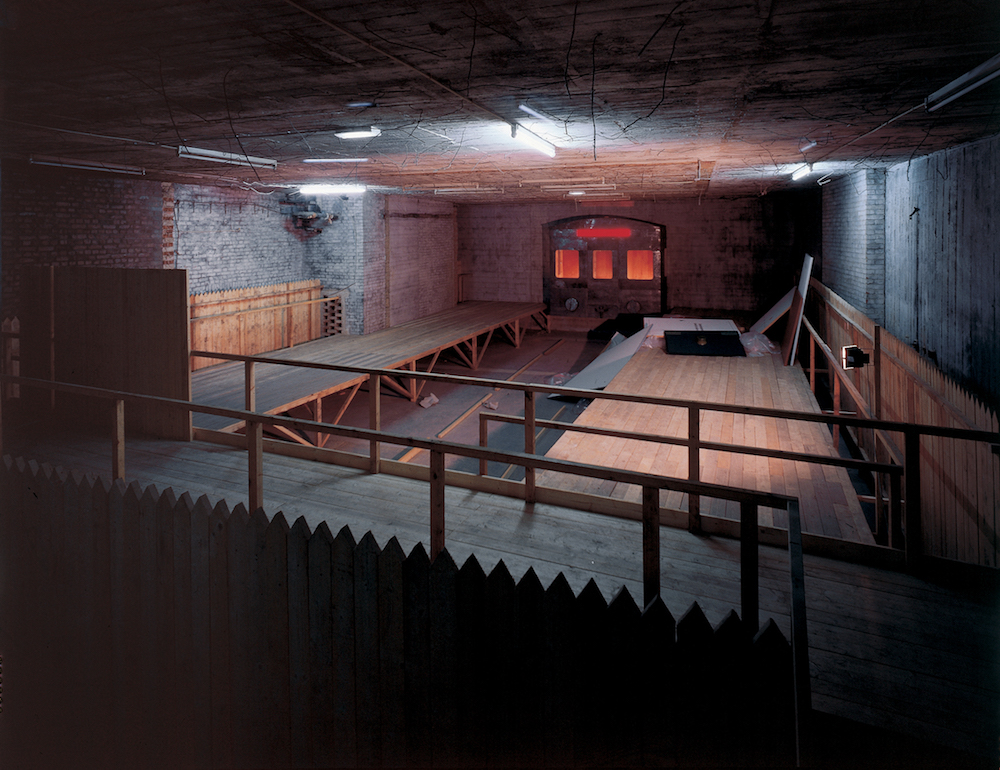
As one of the most famous couples in art history, Ilya and Emilia Kabakov are best known for bringing a glimpse of the Soviet life to the West. Following their first major retrospective, Not Everyone Will Be Taken into The Future at London’s Tate Modern, Emilia talks about the show’s overriding fear of being left behind
In her early childhood, Ilya Kabakov’s mother shared her family apartment with various lodgers; most often, actors. Bertha Urievna Solodukhina would later tell her artist son, “what wonderful people the actors were” and “how they decorated their room in knick-knacks”. All these personal memories Kabakov collected in the late 1980s to form Labyrinth (A Mother’s Album), one of the few autobiographical works from his career. A memoir presented as an installation, it features written excerpts from Solodukhina’s life hung along the walls of an endless corridor, recalling Soviet communal apartments and feeling at times like an trap.
One detail in his mother’s life stuck out for me. It’s easy to miss; as anyone who has walked the dim-lit and maze-like installation will tell you, to read and decipher every panel is a long feat. One of the lodgers, she describes, would bring her sweet wrappers as gifts. The wrappers were adorned with elaborate pictures, as Russian sweets usually are — in this case images of soldiers. For Solodukhina, they served as a substitute for dolls or action figures to be collected and played with. As an artist, Kabakov himself used sweet wrappers in his works, most notably in a series of paintings entitled Holiday (1987). In the same way his mother made characters out of these sweet wrappers, Kabakov too constructed different personas, presented as either the subject or the authors of the works. For Holiday, he invented a Soviet artist who turns away from Socialist Realist painting, adding colourful wrappers in an attempt to beautify his depiction of everyday reality. Glistening on the surface, they reveal a yearning to escape.
Having worked as a graphic artist and children’s book illustrator in the 1950s, Kabakov is an avid storyteller. Perhaps for this reason, he knew that the experiences of the Soviet Union would best be told through characters. Rather than draw on his own life, as he did for Labyrinth, Kabakov has tended to build a fictional, multi-character universe. But the characters have all but disappeared, leaving a trace of objects in their absence. The viewer’s role is to piece together a picture of their lives. From his early experiments in paintings through to the immersive “total installations” that Kabakov is best known for, his works centre around collective memories and missing persons. Nowhere is this more apparent than at the recent Tate show, Not Everyone Will Be Taken into the Future: the first major retrospective bringing together Ilya and his wife Emilia Kabakov’s collaborative oeuvre. The exhibition acts as a “total installation” on an impressive scale, and, as is typical of Kabakov’s work, the artist at the centre of it all is nowhere to be found.
“He’s present here, maybe not in his body but in his mind and his soul,” says Emilia, gesturing to the exhibition. “And through Skype. We’ve been consulting a lot,” she adds. Today, Emilia is taking reign of the press interviews, after over a year of meticulously planning the exhibition. A musician by training, Emilia first began working with Ilya in 1989, as a curator, art advisor and translator, though their history began years before in Dnepropetrovsk, where both artists are from. They married in 1992. Though the show is dedicated to their collaborative effort, she begins each answer from the perspective of her partner, who is 12 years her senior. Much of this has to do with the fact the earliest works in the exhibition predate their partnership: this includes the series of albums he made from 1972 to 1976, revolving around ten fictious characters, as well as his early experiments with conceptual paintings and installation art. Recalling Ilya’s iconic work, The Man Who Flew into Space from His Apartment, which was installed temporarily in Kabakov’s studio and often visited by fellow unofficial artists, Emilia reveals: “Everybody tried to escape during that time. Viktor Pivovarov tried to fly into space, Vladimir Tarasov tried to fly into space.” Whether Ilya’s original hero had any luck on his one-man space mission is also left unclear. The small opening through which you view the installation reveals a shabby apartment decorated in Communist propaganda posters, a makeshift catapult, directly above which is a hole through which the protagonist is thought to have departed. “The irony, of course,” Emilia adds, “is that the catapult escaped first: first to London, then to Zurich and the US, and has travelled the world ever since.”
Ilya followed his catapult in 1987, when he left the Soviet Union for exhibitions in Europe and then the US. Though he’s often referred to as an “emigre” artist, the truth, as Ilya sees it, is that he never emigrated from the Soviet Union. The country ceased to exist a year before the artist settled in New York. It’s probably more apt to say that Ilya brought the Soviet Union along with him, including its dimly lit communal flats and the eccentric cast of characters who inhabit them, together with its utopian dreams and failures. “He brought a lot of works with him, paintings, some installations he already had in mind, like his Ten Characters album series that he later turned into an exhibition at Ronald Feldman Fine Arts. To present his work in the West, he had to bring with him the atmosphere of his home country. To recreate this context was only possible through total installation,” explains Emilia, who herself emigrated in 1973. Does she consider herself as an emigre? “I don’t feel like an emigre, I feel like an international citizen. I am American and I’ve lived there for such a long time, it is now my home.” Though both artists deny the label, their retrospective undoubtedly channels the migrant experience in its fixation on the Soviet period. In recent years, the Soviet-era is something they are moving away from: “Yes we work with Soviet culture. We’re based on Soviet culture, we grew up with Soviet culture. You work with the materials that are important for you: it permeates your being and your cultural background. We mostly work with universal ideas now: cosmism, utopia, human fears. At the beginning, Ilya’s work was driven by the fear that people wouldn’t understand its context. Today, it’s driven by a lot of other fears: there is the fear of love, there is a fear of death, the fear of unknown, the fear of being invisible, the fear of being the centre of attention.”
“I don’t feel like an emigre, I feel like an international citizen”
As the title of the exhibition suggests, the fear of being left behind is the overriding message of the show. For an artist in his late career, this might not be so unusual. For Ilya, the fate of the artist figure has been a constant source of fascination and something he first explored by painting from works of “forgotten” Socialist Realist artists. While paintings like Tested! (1981), based on an earlier work from the 1930s, originally examined how the regime too often discarded artists who had fallen from favour, they also relate to today’s artists’ need for institutional acceptance.
As viewers, we’re made to feel that we’re also being left behind in the way we navigate the exhibition: by the endless corridor in Labyrinth, or by the departing train in the 2001 installation, Not Everyone Will Be Taken into the Future, from which the show takes its name. “When we prepare an exhibition, we think about the different levels on which it could be understood. Whether it’s a renowned art connoisseur or a carpenter from Manchester: viewers will find something to relate to in the show, and that’s enough.” Ilya and Emilia have carved out a legacy in posing universal questions. Yet walking around the exhibition one can’t help but be reminded of the artists who have been left behind. The show brings very little context to other Moscow Conceptualists like Dmitri Prigov, Eric Bulatov, the Collective Actions group and others, who worked alongside Ilya in the 1970s. These non-conformist artists wanted to break with their artistic and cultural heritage. For Ilya the museum was his outer space — his final destination. “For Ilya the museum is like a church, a dream, a fantasy,” says Emilia. “When he was planning his future it was always meant as a continuation of the history of art. Not just Soviet or Russian art, but the history of art in an international sense.”
Ilya and Emilia Kabakov: Not Everyone Will Be Taken into the Future is on display at London’s Tate Modern until 28 January. You can find more information on the exhibition here.

